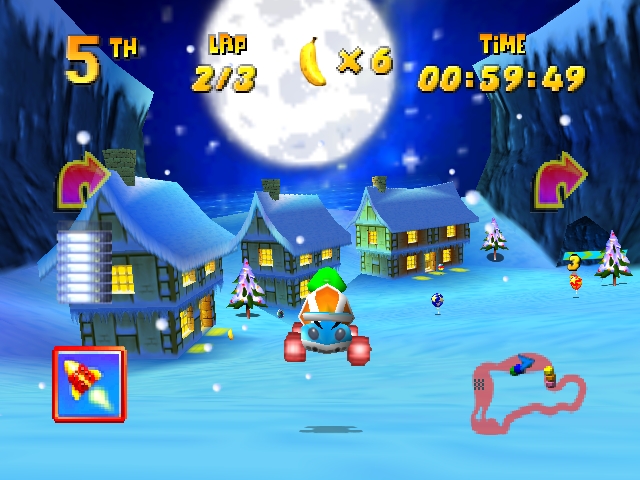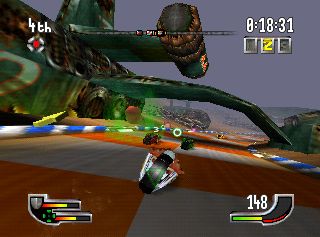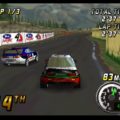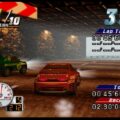Developer: Titus Publisher: Titus Released: 11/30/97 Genre: Racing
I like racing games as much as the next man but the N64 became oversaturated in year one and only got worse over time. Was it really that easy to create racing games at the time? I would not be so harsh if so many during that era did not follow the same generic template. Titus was not a publisher I usually associate with the genre but Automobili Lamborghini is a loose sequel to their SNES and PC game Lamborghini: American Challenge. By focusing on a single car manufacturer it had a unique selling point. The game itself is a bit generic but still solid overall.
Automobili Lamborghini is an arcade racer with a large variety of modes. Both arcade and championship are where you can unlock most of the game’s content. Single Race is the game’s practice mode and Time Trial is self-explanatory. The difference between arcade and championship are significant. Arcade is a straight run through all six tracks where your position only matters in terms of unlocking new content. Championship is a lot like Mario Kart in that you are awarded points based on performance. It also has pit mechanics that you can somewhat control to further add depth.
Initially you have access to the Lamborghini Diablo and Countach. In total there are eight cars, with the other six needing to be unlocked. Although the game has Lamborghini in the title the rest of the lineup feature other brands such as Ferrari, Dodge, and Porsche. It is not as big a lineup as some other racing games but pretty decent altogether. You will have to fight to earn those cars however as Automobili Lamborghini has its flaws.
The controls are the game’s biggest sticking point. The steering model is incredibly touchy; even light taps send you sliding. It is not as bad as say Sega Rally but it comes close. You have few options to tweak the controls unfortunately and so have to live with it. With practice you can adjust but they never become as second nature as the game demands. The sense of speed is also lacking. At its peak there is a decent feeling of movement. But getting to that point is not the least bit satisfying. With the way the tracks are designed you won’t maintain that speed for long either. Racing games focus on speed and track design to keep players interested and in this sense Automobili Lamborghini fails.
The track design is incredibly straightforward as it gets. The courses have their share of tight corners and shortcuts but very few hills or jumps. The tracks are long and are four laps each but that presents its own issues. The AI drivers are smart enough to push you off the road and jockey for position. They will actively block you from passing and are generally aggressive. But once you are out in front the repetitive track side scenery stands out. You can turn on rubberbanding if you feel the game is not challenging. I am not a fan of rubberbanding in general but in this case it does keep the long races lively. In my opinion reaching first place is satisfying as is; you know it took skill rather than the computer being dumb.
Technically there are six tracks. However the last three share the same theme as the first three with new layouts. They are more of a remix than new tracks although the layouts are different enough to feel new. That is more than I can say for most racing games that generation. There are not any new courses to unlock but beating championship on pro will unlock reverse mode.
Automobili Lamborghini was one of the cleanest racing games released that year and is largely devoid of the typical N64 blur. Fog is kept low and the draw distance is pretty far. Trackside detail is high although the longer tracks recycle elements multiple times. The framerate is high and rarely drops too. Even more impressive is the multiplayer mode. You can play a four player splitscreen with AI drivers with little hit in performance. It is an incredible technical feat from an unexpected developer that still looks solid today.
In Closing
Automobili Lamborghini nails the fundamentals and is still enjoyable today. Outside its car license it has no standout features. But it doesn’t need them. This is a solid game all around in a genre that quickly became crowded. Titus had so much promise at the beginning of the Nintendo 64’s life; what the hell happened?





